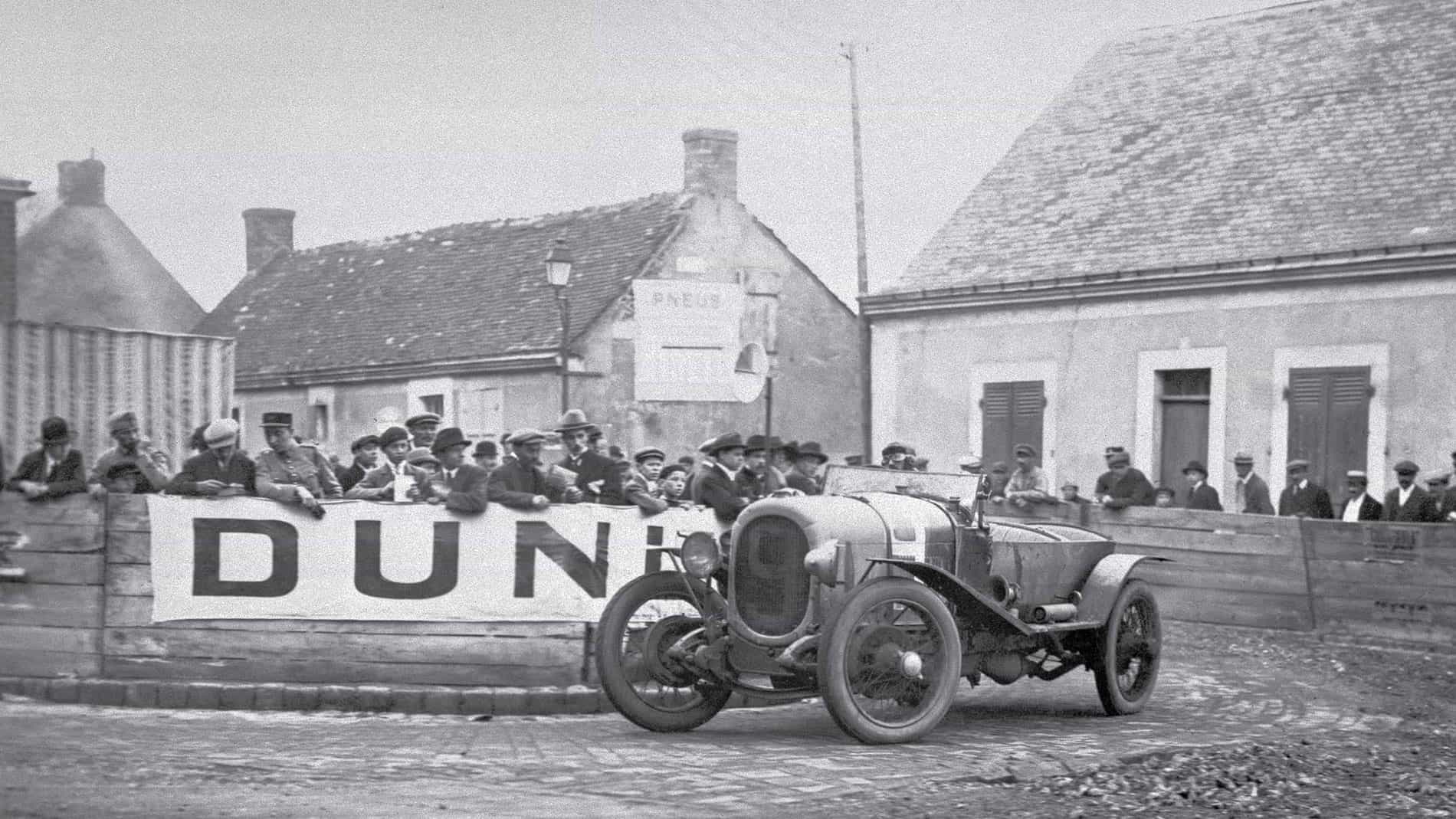1923-2023 Evolution
Over the last century, the Le Mans 24 Hours has changed almost beyond recognition. We trace the development of the world’s most famous race from its humble beginnings to the cutting-edge event we now know, and recount some of the epic battles along the way
Getty Images
1923: The birth of the 24 Hours, with no winner…
As well as founding a legend, the very first 24 Heures du Mans has two rare boasts. First, despite unsurfaced roads, fragile tyres and pioneer engineering, only three of the 33 starters failed to finish – a ratio unmatched in the 90 years since. The second odd fact about the 1923 race is – nobody won. Why? Because the ACO set up this test of endurance as a rolling three-year trial for the Rudge-Whitworth Cup. Theoretically there would be no victor until 1925.
Decided by a maths-fest of average speeds and percentage gains, the three-year ploy soon fizzled out. But you can’t have a race and no winner, so the honours for greatest distance in that first 24 hours fell to the 3-litre Chenard et Walcker of Lagache and Léonard, who whistled past the makeshift pits 128 times, ahead of a sister car and a Bignan. A French whitewash, in fact; not surprising as there was only one foreign entrant, John Duff’s 3 Litre Bentley, running second until a punctured fuel tank lost him and Clement more than two hours, dropping them to fourth after Clement had to cycle out with fuel.

The Chenard et Walcker of André Lagache and René Léonard rounds Pontlieue Hairpin on its way to victory in 1923
That first event was to be a test of touring cars which had to retain wings, lights, horn etc and prove they were practical four-seaters by carrying 10st of ballast for each empty seat.
The Autocar described the route as “a triangular course not much more than 10 miles round, with a hairpin, two right-angled turns and several twisty bits”. That hairpin, in Pontlieue village, was permanently by-passed after 1928 to avoid having locals stuck within their houses for virtually a full week in order to avoid the thundering bolides running through the town.
In later times drivers would run to their cars and erect the hood before getting going, which was the origin of the Le Mans start, but in 1923 veteran racer Charles Faroux dropped the flag on a grid much like today’s grands prix – set up in two by two formation. Heavy rain and hailstones made the inaugural event as big a test of man as machine. “The men were blinded with mud and water,” reported The Autocar, “and suffered extremely from sore eyes.”
Out on the muddy, rutted roads the worst bends were lit by acetylene lamps, while above the ‘replenishment pits’ hung electric lights. But out on that endless straight you were on your own, with all the risks of erratic lights: Frank Clement recalled, “it was dreadful; we had holes a foot deep.”
At changeovers, tired and muddy drivers were regaled with hot soup, roast chicken and champagne, while spectators enjoyed jazz bands, a cinema and fireworks, a tradition that endures. And Brits were already flocking to watch.
Despite the confusing triennial scheme this first 24 Hours was a huge success, boosted by the Chenard/Bentley duel. WO Bentley, who decided to go only at the last minute, said “by midnight I was certain this was the best race I’d ever seen”. It wasn’t hard to decide that his cars should return… GC
The winners
1923
Chenard & Walcker
André Lagache/René Léonard
2210km
Original 17.3km circuit runs through Pontlieue, used until 1928
1924
Bentley 3 Litre Sport
John Duff/Frank Clement
2077km
New rule stipulates that cars must cover 20 laps with hoods up
1925
Lorraine Dietrich B3-6
Gérard de Courcelles/André Rossignol
2234km
Famous Le Mans start first used
1926
Lorraine Dietrich B3-6
Robert Bloch/André Rossignol
2552km
First grandstands built and 100kph average achieved. Mulsanne Straight asphalted
1927
Bentley 3 Litre Super Sport
Dudley Benjafield/Sammy Davis
2370km
1928
Bentley 4½ Litre
Woolf Barnato/Bernard Rubin
2670km
1929
Bentley Speed Six
Woolf Barnato/Henry Birkin
2843km